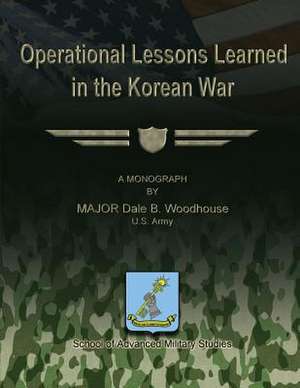Operational Lessons Learned in the Korean War
Autor Us Army Major Dale B. Woodhouse Contribuţii de School Of Advanced Military Studiesen Limba Engleză Paperback
Preț: 114.30 lei
Nou
Puncte Express: 171
Preț estimativ în valută:
21.88€ • 23.77$ • 18.39£
21.88€ • 23.77$ • 18.39£
Carte disponibilă
Livrare economică 31 martie-14 aprilie
Preluare comenzi: 021 569.72.76
Specificații
ISBN-13: 9781479331031
ISBN-10: 1479331031
Pagini: 62
Dimensiuni: 216 x 279 x 3 mm
Greutate: 0.17 kg
Editura: CreateSpace Independent Publishing Platform
ISBN-10: 1479331031
Pagini: 62
Dimensiuni: 216 x 279 x 3 mm
Greutate: 0.17 kg
Editura: CreateSpace Independent Publishing Platform
